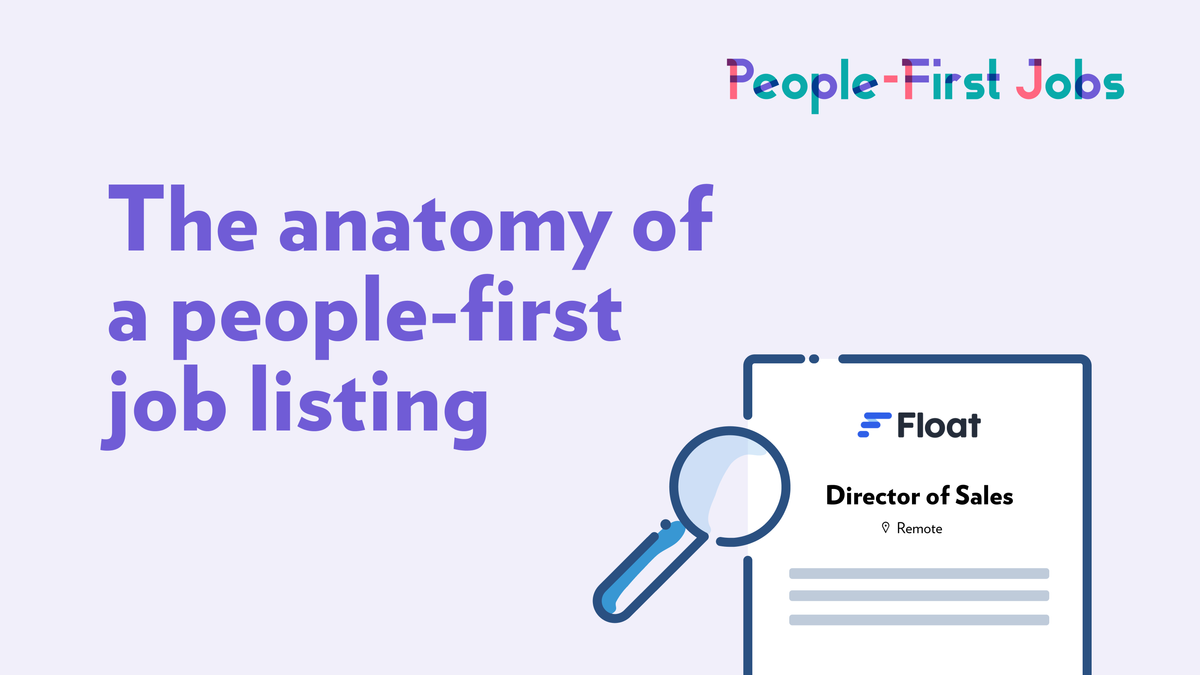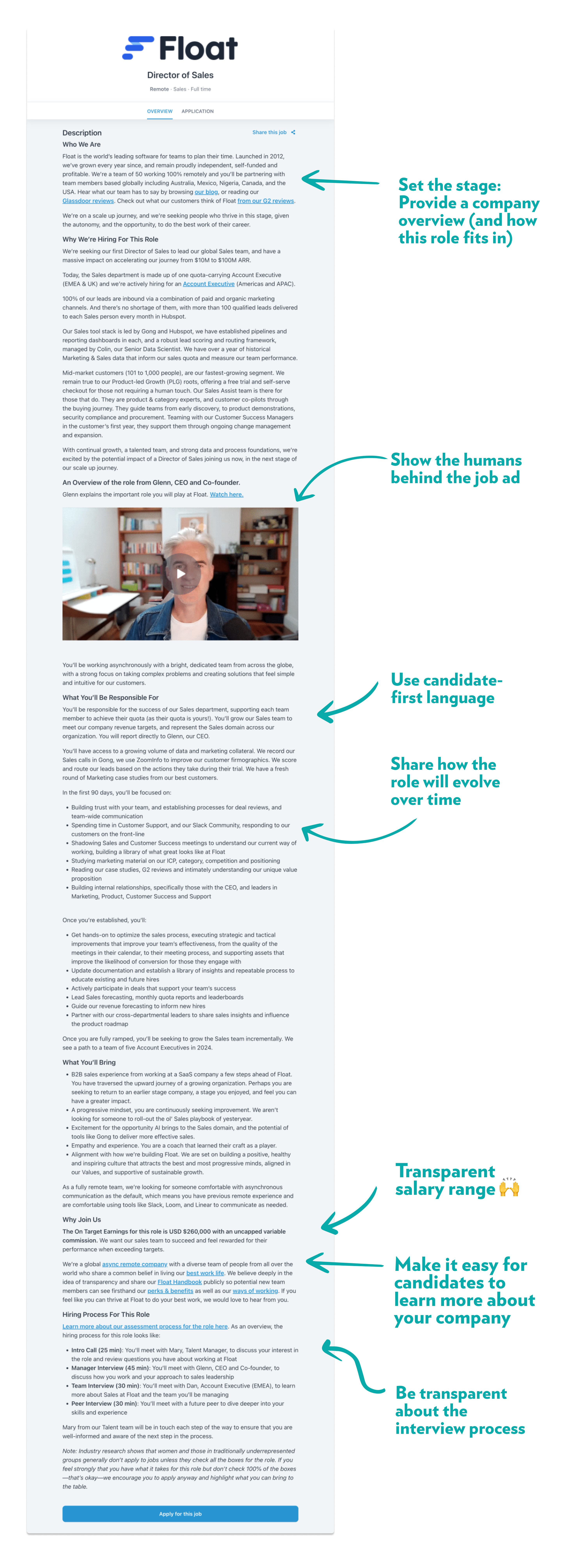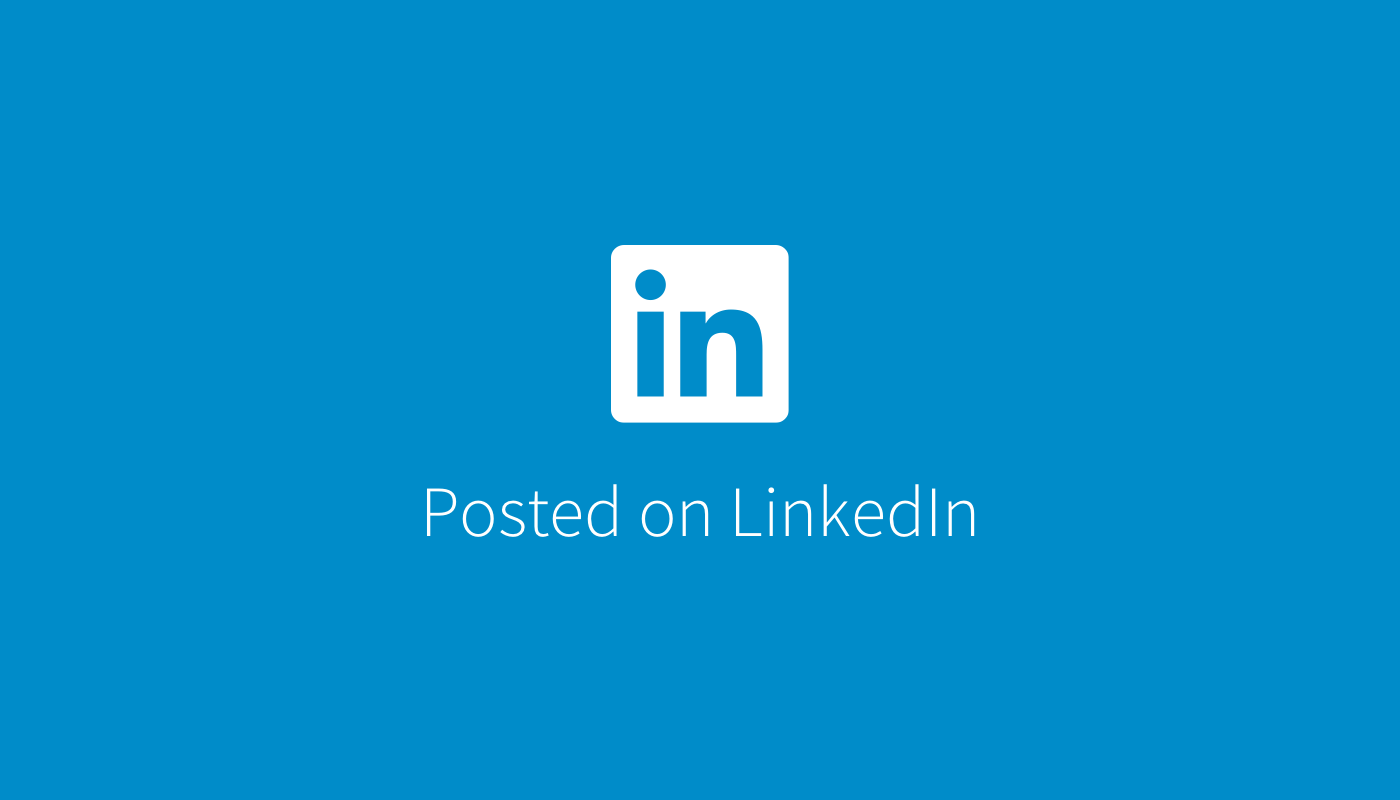The anatomy of a people-first job ad
Here’s how companies from the People-First Community craft outstanding job ads that are human and engaging.

When looking for a new job last year, I grew increasingly allergic to certain types of job ads. I came across so many examples full of buzzwords, vague values speak, and laundry lists of what was expected from me while giving very little information about what I’d get in return.
Even if I fit the profile, just by reading these ads I thought, “I absolutely do not want this job.”
But luckily, there were exceptions—those ads that made me feel excited about what I could embark on. Those that really helped me understand what this new job would be about, what team and culture I’d be joining, and what would be in it for me.
Crafting a detailed job ad is your first step to finding a great new team member. The process helps you be 100% clear and intentional about what the position entails and what type of human will be happy and successful in it. By investing care into your crafting process, you make it easier for candidates to decide whether they're a fit for the role and your team.
If you craft your job listings with heart, candidates are more likely to respond with equal care and intend.
But how do you craft a truly outstanding, people-first job description? Several of our PFJ community members have mastered the art of writing great job ads, so let’s take a look at what they do right about advertising open positions—and what techniques you might want to apply to your own job listings.
Today, we’ll look at a listing for a Director role at Float.

6 characteristics of a job ad that make your company stand out
1. Use candidate-first language
There are still many job ads out there talking about “the ideal candidate.” Do you mean me? Then make me the subject of your sentences.
Speaking directly to the candidate rather than referring to them in the third person can make a world of a difference. Let’s look at an example:
| Impersonal (what you see in many job listings) | Personal (Float’s approach) |
|---|---|
| The Sales Director is responsible for the success of our Sales department, supporting each team member to achieve their quota. | You’ll be responsible for the success of our Sales department, supporting each team member to achieve their quota (as their quote is yours). |
While both examples technically say the same, one feels cold and distant, the other one is human and engaging and immediately builds a connection.
If you wonder how to do that, take a look at Knowledge Owl’s blog post about putting customers (or candidates) first. It’s filled with many hands-on tips on how to put the person you're talking to at the center of your writing.
2. Don’t be afraid of writing long job ads
I recently read that the best-performing job posts are between 300 and 600 words long, but to me, a well-written job ad can be much longer than that. With more than 1,300 words, Float’s recent job listing had more than twice the word count, but because it’s well-structured and thoughtful, it helps candidates get a true understanding of the company and the open position.
I don’t think there’s such a thing as providing too much information in a job ad. Plus, if you have additional resources that can give interested candidates a deeper understanding of what it's like to work on your team—whether that's a public handbook or blog posts—make sure to include them, too.
Float even goes as far as sharing the guidelines the internal team uses to align on what would define a "Hell Yes!" candidate, and how they're using each stage of the interview to better understand if the candidate is a match. Mary, Float's Talent Manager, shares more about why they've turned this resource that was previously used internally only into a public asset:

3. Show the humans behind the job ad
When looking for a new job, it’s not only the position and responsibilities that are part of the package, but also the people I’ll be working with. So please tell me in your job ad: Who will be my manager? Who will I work and interact with most? Once I know, I can learn more about my potential future colleagues, and look at their writing or social media posts—just like you will do your research about me.
Float adds a special human touch to their job listings: Each job ad includes a brief video from the hiring manager who shares a little more about the role. The Loom videos aren’t super long—the one in the listing above is just 90 seconds—but still, it's a powerful way for me as a candidate to get an idea of the hiring manager’s personality and whether I can picture them as my future boss.
4. Share how the role and expectations will evolve over time
A position isn’t set in stone—it changes over time and is shaped by the person in it. Float gives a clear overview of how responsibilities develop. They divide them into three stages so applicants can understand the road ahead:
- The first 90 days are all about building foundations and relationships, diving into company knowledge, hands-on learning, and cross-departmental shadowing.
- Once the new team member is more established, the focus lies on optimizing processes, knowledge documentation, and collaborating with leaders from other departments.
- Ultimately, growing the team will be added to the list of responsibilities for this role.
5. Show me what you’ve got!
Many job ads list three or four company values—and that’s all they say about their culture. Please do more! In times when everybody is offering a “competitive salary”, your company culture and benefits can be your USP. Float directs candidates to the Perks & Benefits page of their handbook, where they tell you in great detail about the inner workings of their company.
And then there’s money: I understand that not every company is like Buffer and transparently shares all of their team’s salaries. But besides a number of laws that make it mandatory to include salary ranges in job ads in certain parts of the world, it’s simply becoming best practice to give applicants an idea about what salary package they can expect.
Float includes the position’s salary in each of their listings—and their handbook details how they benchmark salaries and regularly review pay.
6. Be transparent about the steps in the interview process and how long they might take
Hiring processes vary greatly between organizations. How many interviews are there? And will I need to make time for a sample project? Your job ad will help align expectations if it gives candidates a transparent overview of your process
Float includes detailed information about who candidates will be talking to throughout the selection process, giving them the chance to prepare.
Take a little extra time to craft your ad—it’ll be worth it!
Here we are. Following these steps, you’ll create a fair, transparent, and honest job ad that really puts your company at eye level with the applicants. Not only will they keep reading and get more and more excited about the open position, but they will also send you much better and more informed applications.
Happy crafting!
If along the way you got curious about Float, you should know that the team is hiring! Check out their open roles here.

